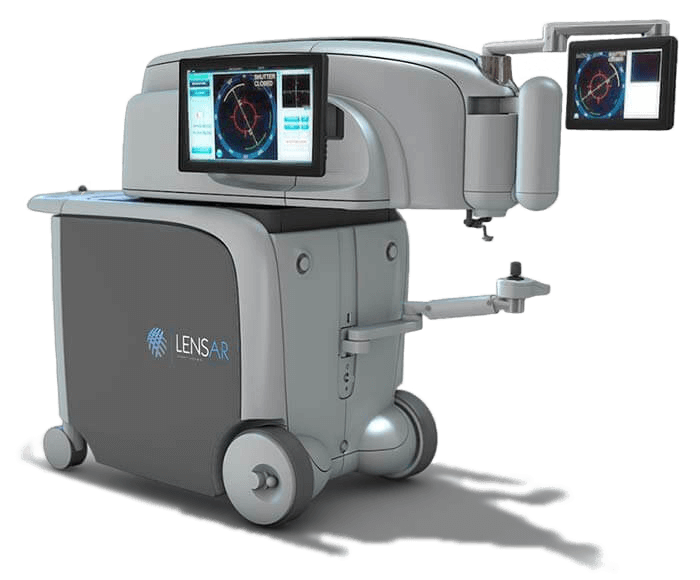The eye works like a camera, using its natural lens to focus on an image. If a camera lens became cloudy, the image becomes blurred. A cataract is a clouding of the eye’s natural lens, and its formation is a normal part of the aging process. Symptoms include blurred vision, the need for brighter light to read, faded colors, sensitivity to light and glare, halos, double images, impaired night vision, and frequent changes in contact lens or eyeglass prescriptions.
Cataract surgery is the most commonly performed surgical procedure in the world. However, Refractive Laser-Assisted Cataract Surgery differs in two important ways from traditional cataract surgery: the intraocular lens implants and cataract surgery technology.
Cataract Vision Simulator







The Cataract Surgery Technology
The second important difference between ReLACS and traditional cataract surgery is the surgical technology that is used. Dr. Herschel uses the LENSAR® Laser System with Augmented Reality™, an advanced femtosecond laser and imaging system, for his ReLACS procedures.
LENSAR’s superior Augmented Reality imaging system represents an advanced approach to cataract surgery. With Augmented Reality, Dr. Herschel can see everything inside the eye in greater detail. LENSAR’s precision, imaging, and laser incisions enable Dr. Herschel to ensure that the cataract is safely removed and that the new intraocular lens is properly positioned, resulting in better vision outcomes.
The LENSAR® Laser System is a femtosecond cataract laser built specifically for refractive cataract surgery (a femtosecond laser is the same type laser that is used to cut the flap in LASIK surgery). Because it was designed from the ground up, every aspect of the laser has been purposefully designed to meet the needs of cataract surgeons and their patients.
Intraocular Lens Implants (IOLs)
In traditional cataract surgery, the natural lens is removed and replaced by a monofocal lens. This lens may not correct for all the most common refractive errors, and readers or bifocals will likely be required after surgery for clear vision.
In contrast, ReLACS can correct these refractive errors; restore near, intermediate, and distance vision; and eliminate the need for readers or bifocals after surgery. (ReLACS is like Refractive Lens Exchange (RLE), except in RLE the natural lens has not yet developed a cataract.) More and more people enjoy active lifestyles, and they do not want to put up with glasses or contact lenses after cataract surgery. So they are choosing Refractive Laser-Assisted Cataract Surgery with premium lenses instead of traditional cataract surgery with monofocal lenses.
The best premium intraocular lens implant for you will depend on your vision and eye conditions. These include toric lenses for myopia, hyperopia, and astigmatism; multifocal lenses for a wide range of clear vision, near, intermediate, and distance; and aspheric lenses to correct aberrations in the spherical shape of the eye. After a comprehensive eye exam and diagnostic testing, Dr. Herschel will discuss with you which premium IOL will best meet your vision correction needs. Learn more about premium IOLs.

Who Is A Candidate For Refractive Laser-Assisted Cataract Surgery (REALCS)?
Virtually anyone with cataracts who does not want to wear eyeglasses or bifocals after cataract surgery.
Ready to Get Started? Book your consultation today!




